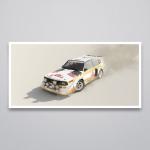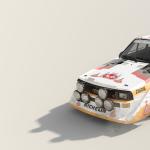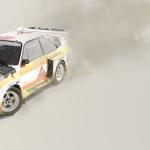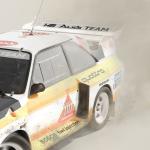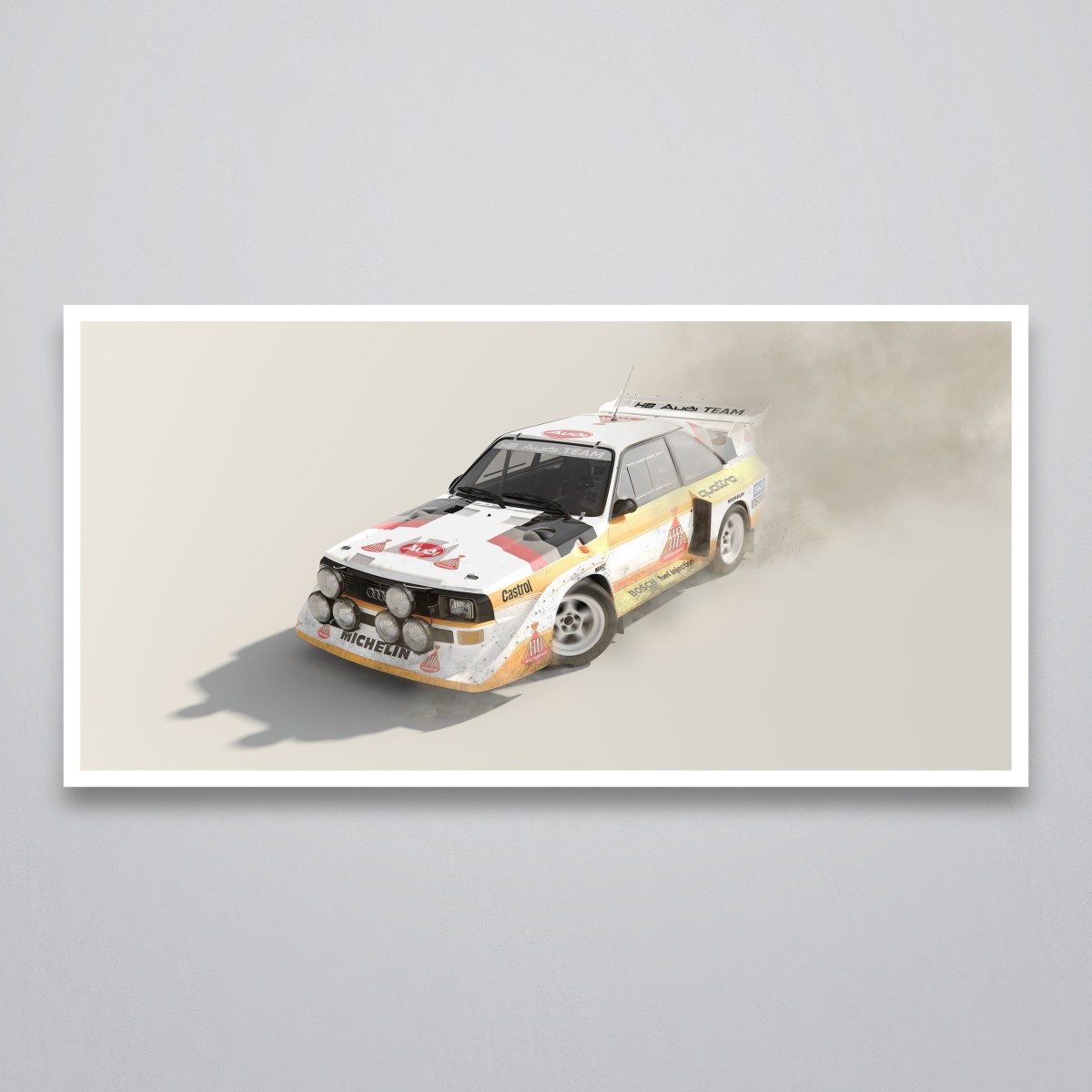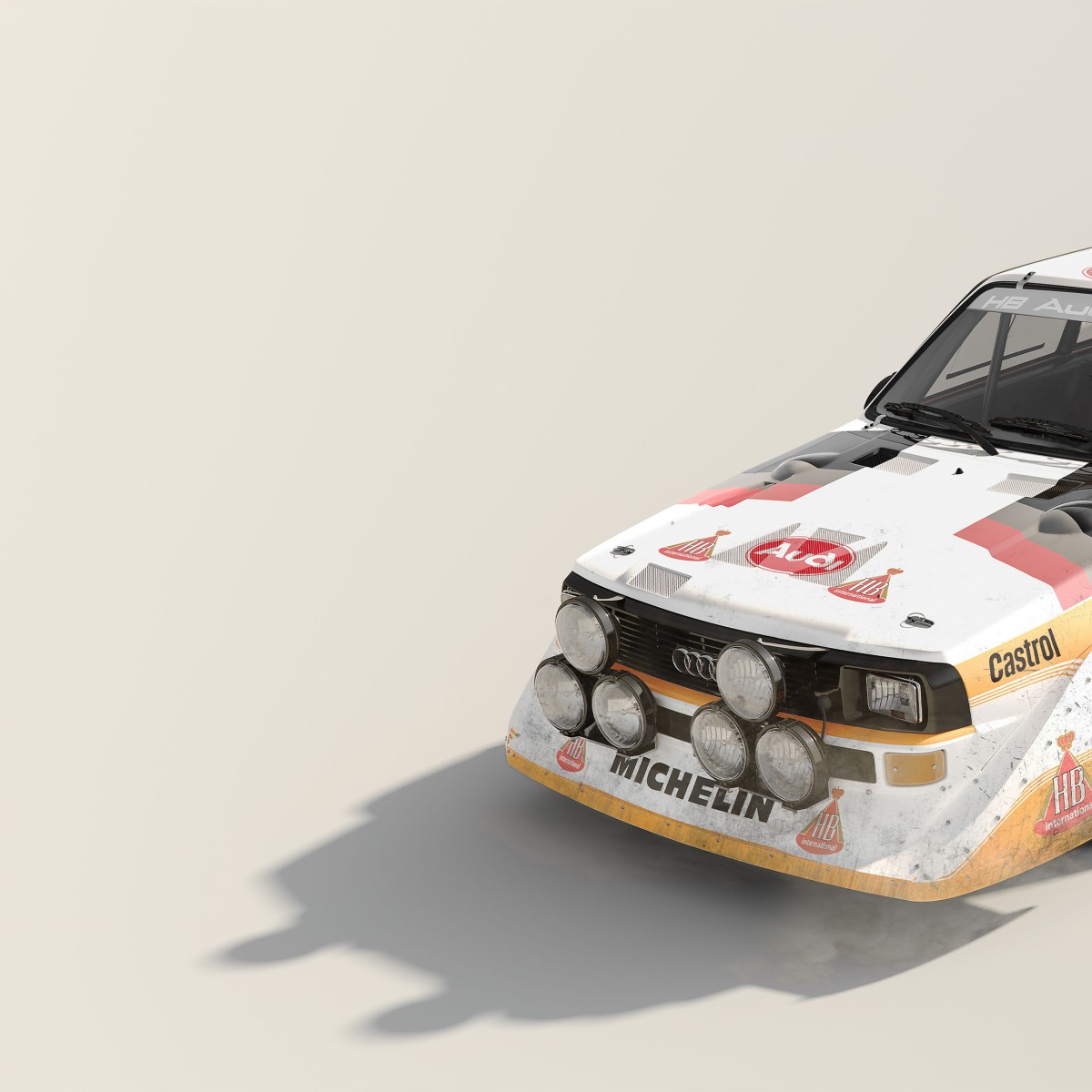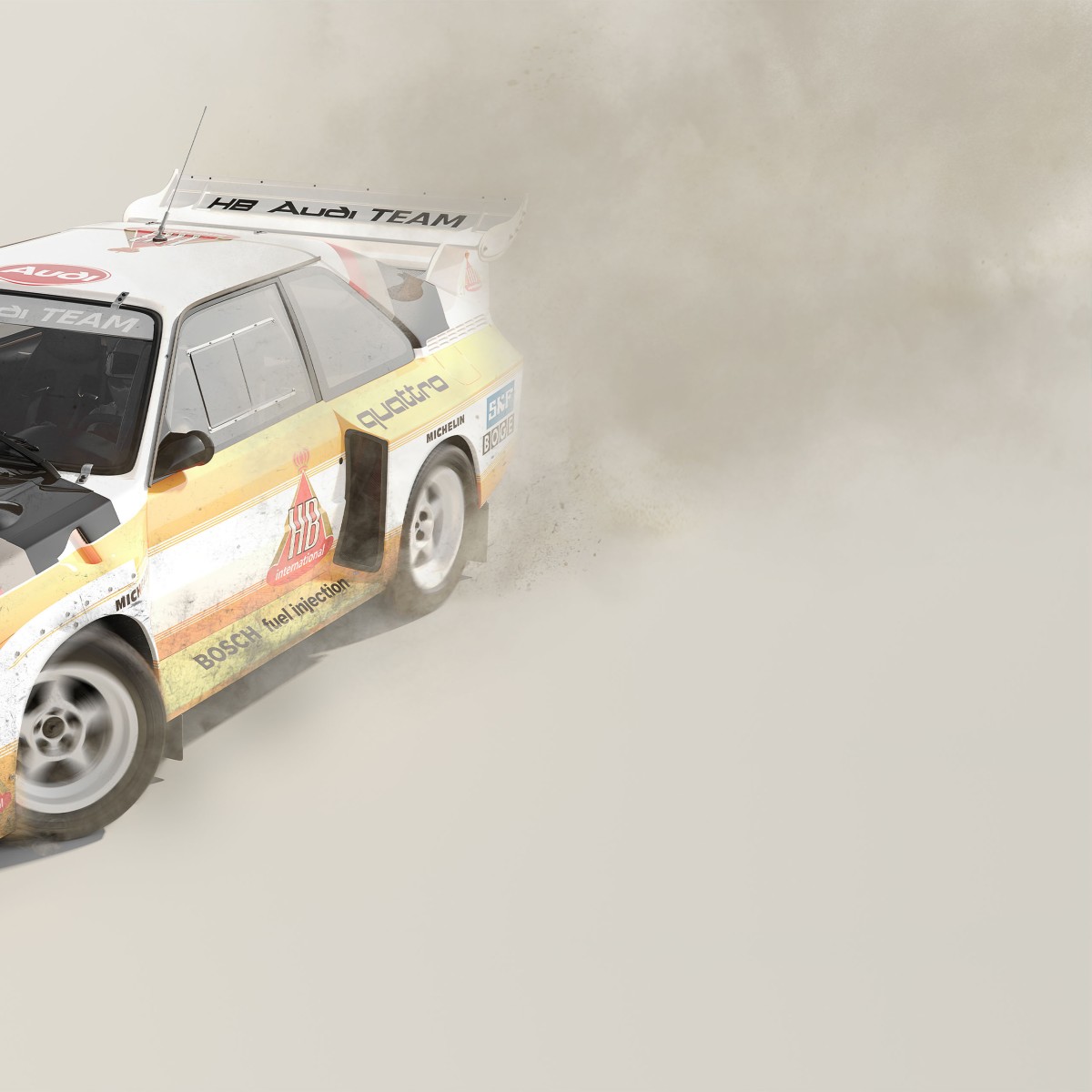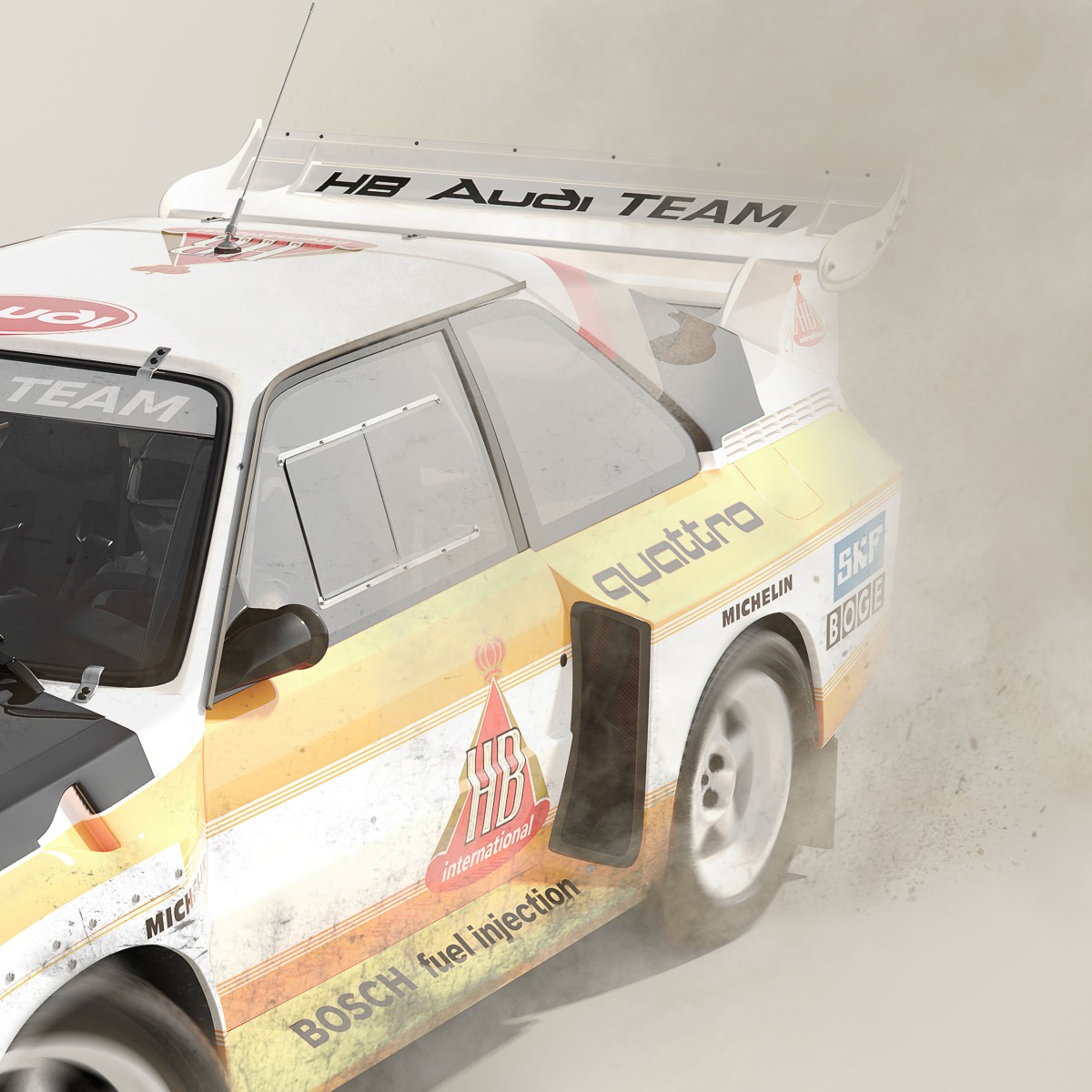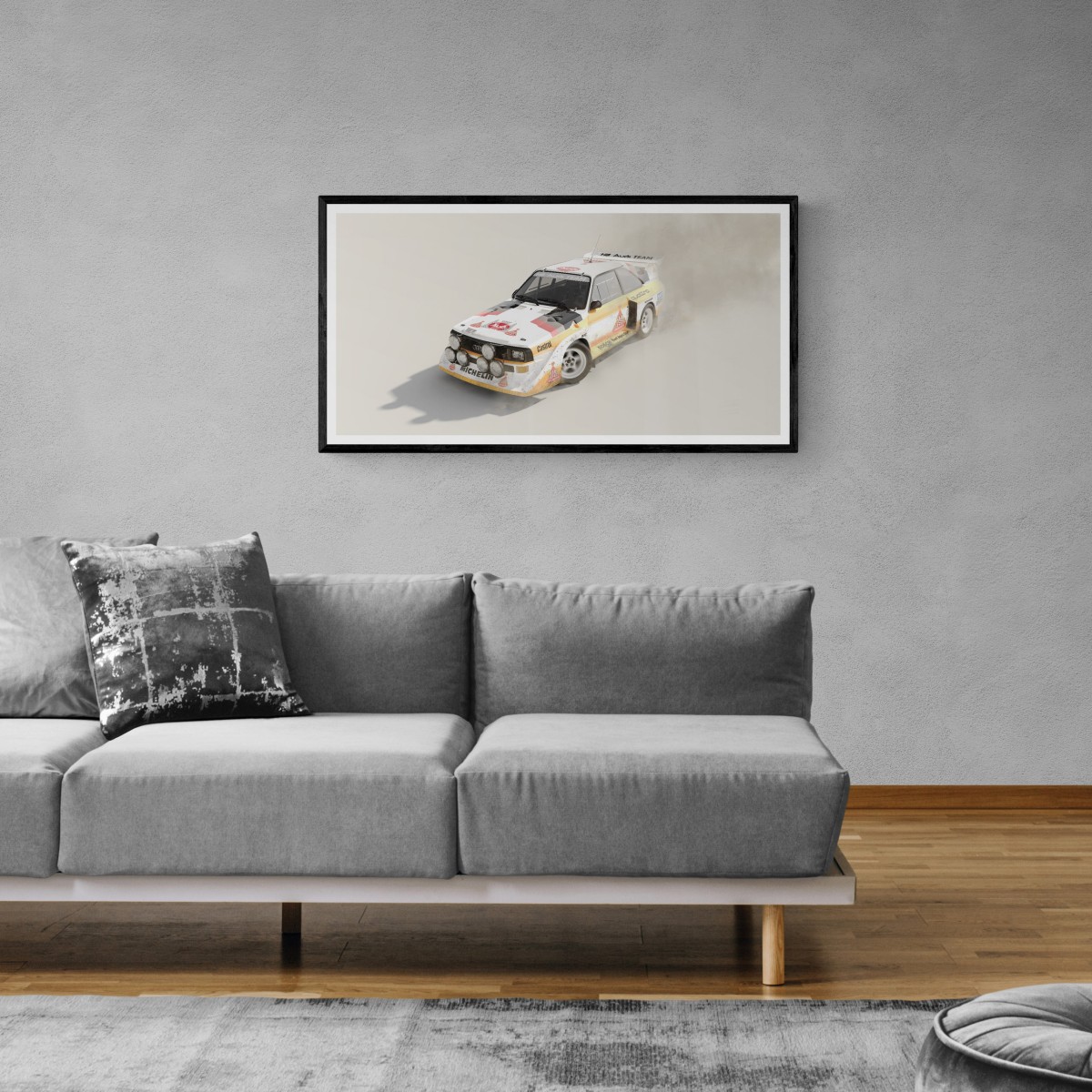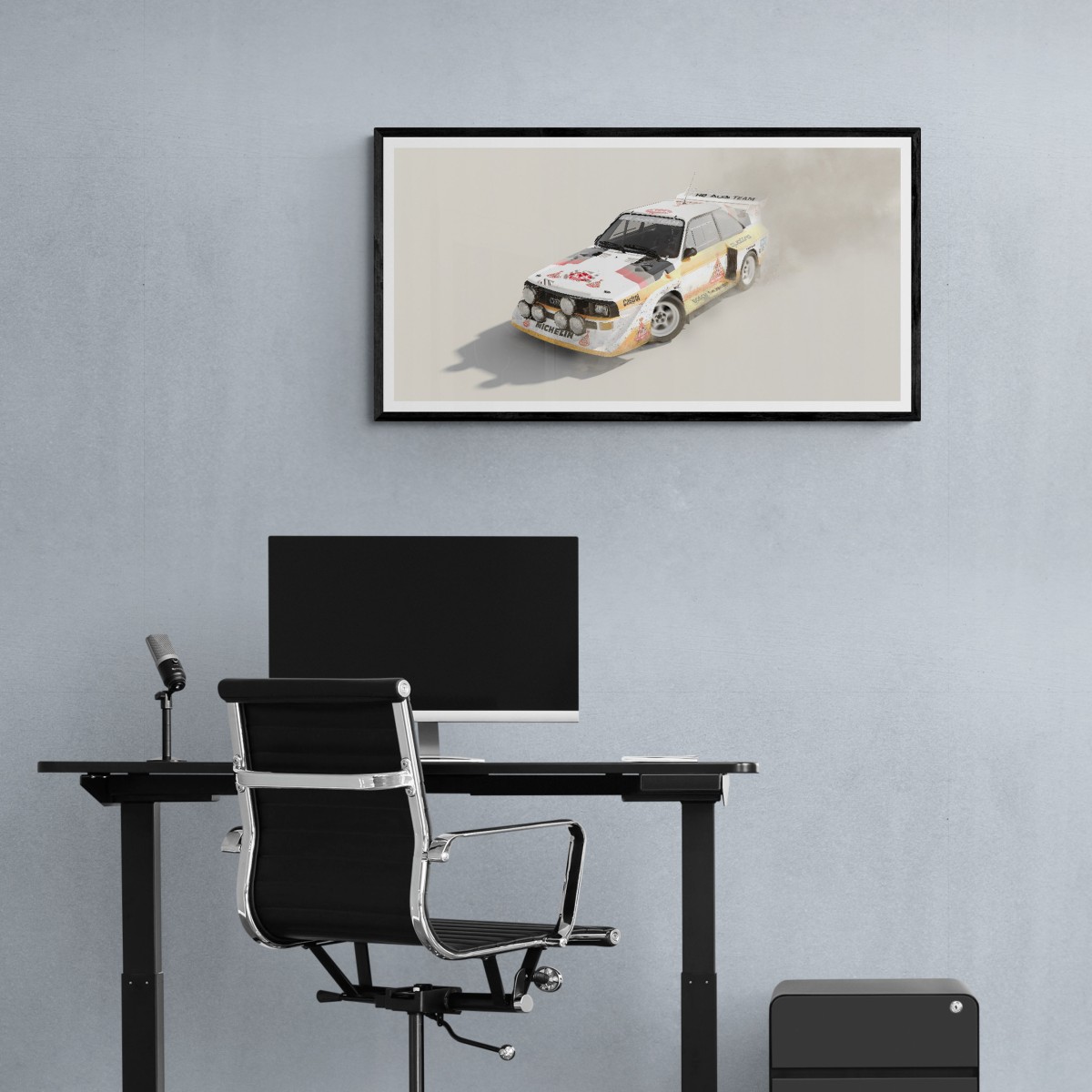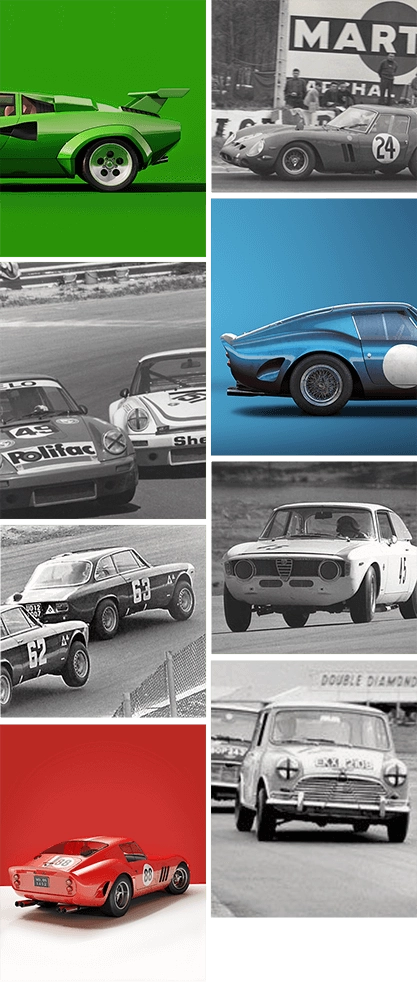
Together we are stronger, that’s why we believe in collective action. At Colors of Speed, we are planting one tree for every order we receive. Car related doesn't mean dirty.
It was only 4 decades ago that the four-wheel-drive system became innovated into the effective system that it is today. Credits for this innovation go to Audi’s development of their Quattro model, which made its debut in 1980. Besides the technical innovation that the Quattro represented, it offered the practicality of a four (or even five) seater without compromising on the handling, style, and performance that we know Audi today for.
Back when the design and development of the Quattro started, however, Audi was far from a premium car marque yet. In order to gain the recognition that Audi was looking for, it strategized a plan to get into rally racing. Accordingly, Jorg Bensinger (Audi’s aspiring engineer) pitched the idea of reworking the four-wheel-drive system in order to be more suitable for conventional road car use. Ferdinand Piech, head of Audi’s Engineering Department, approved Bensinger’s pitch, and launched the project in 1977.
4-wheel-drive was originally something used for off-road cars, which originated from its roots in military vehicles. In 1966, the Jensen FF model by the British Jensen Motors was a conventional road car with 4WD, but while the problem with the original systems was that they were too heavy and big, Jensen Motors’ system was too expensive and unfit to mass-produce effectively.
Innovating the 4-wheel-drive system
So, from 1977 onward, Bensinger led Piech’s team into the experimentation and evaluation of a variety of potential 4-wheel-drive system designs. Ultimately, they settled for a system made up of 3 differentials, center, front, and rear differentials, that would distribute power across the 2 axles. Although the 50:50 torque splitting was standard, drivers of this system were able to manually lock up an axle when they were stuck in a wheel slip.
This part wasn’t particularly innovative yet, but the lack of the transfer case was: the center differential was integrated with the gearbox in order to turn into a lightweight and compact component, which Audi achieved via a hollow gearbox secondary shaft that contained a prop shaft inside. The gearbox shaft, in turn, drove the center differential, which via the hollow gearbox shaft connected one output shaft to the front differential, and one to the rear. Audi’s system, in effect, was able to stay light and compact, while also significantly reducing production costs.
The Quattro design
Although the 4-wheel-drive system was very innovative, the Quattro model itself was based on the older Audi 80 platform combined with the engine and MacPherson strut suspension system of the Audi 200. However, reshaping the 80 model into the Quattro coupe’s 3-door hatchback and the triangular C-pillar with quasi ventilation grilles at the base did do much to improve the car stylistically. The more pronounced wheel-arches, in turn, give it a more sports car look, while the 4 Audi logo rings on the side reaffirm the Quattro’s modern 4WD technology.
The Quattro’s interior, however, is much like the 80 – primarily functional rather than stylish. Yet, with the wheelbase stretched by half an inch and the rear screen slope leaving enough headroom, the Quattro is a spacious and true five-seater car. Although the seats and carpet don’t really look esthetic, they are comfortable and ergonomic, making the car perfect for long drives too.
The Quattro’s powertrain overtime
As the steering wheel in the picture above already reveals, the Quattro’s 2.2-liter engine derived from the 200 Turbo model enjoyed the enhancement of the KKK turbocharger. In effect, at 5500 rpm the Quattro boasts 200hp, while at 3500rpm it has a torque of 210lb-ft, enabling the car to do 100km/h in only 7.3 seconds and reaching a top speed of 217km/h! In addition to these impressive-for-the-time stats, the Quattro’s engine also hummed a beautiful soundtrack while the turbo was fairly smooth and lag-free.
Yet, the turbo was still lagging a bit and needed about 3000rpm to work optimally. Although this is not really problematic, the more responsive and torque producing naturally aspirated engines of competitors such as Porsche’s 944 raised the bar indefinitely. Accordingly, the 1987 Quattro engine had almost 100cc extra displacement with higher compression and a turbocharger that was now water-cooled, which increased the torque at lower rpms and decreased 0-100km/h to 6.3 seconds as a result. Then, in 1989 the Quattro turbo lag became negligible through a twin-came 20-valve head that increased the top speed to 227km/h, horsepower to 220, and torque to 228lb-ft, which was now generated at 1950 rpm already.
Improving the innovative
With the 1987 Quattro also came an improvement upon Audi’s 4WD system in which the center differential was now replaced by a Torque-Sensing (Torsen) limited slip differential (LSD) – the system that still powers the contemporary Audi Quattro cars. The genius of the Torsen LSD is that it automatically limits the torque to the front or rear axle to 75% max, meaning that drivers don’t have to manually lock up the differential anymore. In effect, the new Quattro got much more traction on wet, gravel, and snowy terrains, which made it an increasingly versatile vehicle.
Yet, the 4WD system had drawbacks too, because it required the V5 engine to be located right before the front axle in order to accommodate the front wheel driving mechanism. As a result, the Quattro is a nose heavy vehicle with a 61:39 front-rear weight distribution. Luckily, the car controls its body roll excellently and it handles very responsively and accurately since the driver is connected to the road via a combination of its seat, steering wheel, and throttle. Such intense driver involvement doesn’t feature in successive Audi cars anymore, which has dubbed this Quattro line that was in production up to 1991 as the “Ur Quattro.”
Rally Racing
4 years after Audi started the development of their innovative 4-wheel-drive system, the marque shocked the world with a victory during their 1981 rally debut in Austria. Subsequently, other car marques also pursued the development of their own 4WD cars, but in the meantime Audi also won the 1982 constructor title and the 1983 driver title with its Quattro model. Then, the debut of Group B in 1984 enabled Audi to reshape the Quattro into a racecar model – the Sport Quattro – which immediately won both the constructor’s and the driver’s titles of 1984.
In short, Audi’s road to success immediately turned out as a fruitful pursuit, a pursuit that has established them as the premium car marque that we all know them to be today.
Can we help? Contact us via the chat or the contact form
Contact usWe use Canon's 5-color reactive pigment-based ink to reproduce all the tones and colors vibrant and natural. Images are printed at ultra high resolution for clarity.
We have selected the ideal 180g/m2 French matte photo paper - which fully meets increased requirements and the desires of our customers.
Depending on your location, the order will be dispatched from Europe (the), USA, UK or Australia
- Local delivery time (Netherlands): 2 to 5 business days
- Europe: 5 to 10 business days
- United Kingdom: 1 to 2 business days
- USA & Canada: 1 to 2 business days
- Australia: 1 to 2 business days
Customs and import taxes: Buyers are responsible for any and import taxes that may apply. The seller is not responsible for due to customs.
We are happy to accept returns and exchanges on unused goods if you contact us within 14 business days of delivery and dispatch products back within 30 days of delivery.
Return shipping and insurance costs are also the responsibility of the customer. It is advised that all returned goods are insured and sent with tracking information. Until we receive your returned products, their condition is the customers responsibility.
We'll send you an email to confirm that your return has been received and that your refund has been processed. This can take up to 7 business days.
Your refund will be credited back via the original method of payment. Please allow up to 7 business days for your refund to appear on your bank statement. If for any reason we are unable to issue a refund via the original method of payment, we will contact you to arrange an alternative payment method.
